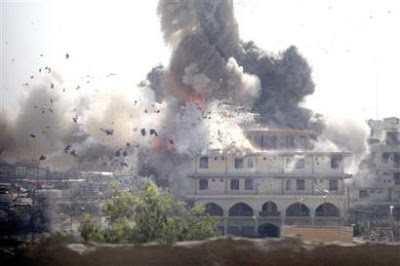Saturday, December 27, 2008
Sunday, December 14, 2008
Friday, December 12, 2008
Sunday, October 19, 2008
Monday, September 22, 2008
Bachelot-Caron (entry ripped from Dennis Cooper's blog)

Louis Bachelot et Marjolaine Caron ont les chiffres renommés devenus de culte en France pour les illustrations raffinées qu'ils créent pour de véritables magasins de crime et feuilles de scandale, en particulier les périodiques français populaires deux de « détective » et « de Nous » aussi bien que les journaux « Le Monde » et la « libération ». Leur travail a récemment commencé à être vu internationalement en le R-U, l'Allemand, et les magasins révélateurs américains aussi bien que dans quelques endroits plus élevés comme « le Newyorkais ». Leur travail est créé sur la tâche à brève échéance et recrée toujours les conditions particulières d'un crime de vie réelle. Utilisant leurs amis, famille, et connaissances comme modèles, ils installent de fausses scènes du crime souvent avec l'aide de film-comme des ensembles qu'ils établissent dans leur studio/garage. Les scènes sont photographiées et alors les photographies sont soignées par l'intermédiaire du logiciel de simulacra de peinture jusqu'à ce qu'elles réalisent un effet sinistre et désorientant par lequel elles semblent photographiques et painterly. Il y a quelques années, leurs illustrations ont commencé à être découvertes et soutenues par des personnes en dehors du lectorat révélateur de magasin comprenant des notables tels que Claude Chabrol, Gaspar Noe, Michel Houellbecq, et d'autres. Ceci a pour mener à plusieurs expositions de leur travail, y compris une exposition récente de galerie ici à Paris qui a occasionné ce poteau, et une grande exposition au centre pour la photographie dans la ville de Reims l'automne dernier qui a inclus un genre de composant hors site d'exécution où le public invité à participer à un de leurs échafaudages de scène du crime à une usine locale de carton. Ceci est documenté dans un clip vidéo que j'ai enfoncé vers le bas ci-dessous. Bachelot et Caron ont déclaré que tandis qu'ils apprécient l'attention du monde d'art et des occasions qui les fournit, ils se considèrent les cuirs épais et les illustrateurs de crime qui leur travail seraient plutôt regardés dans le cadre des magasins et des articles de nouvelles pour lesquels ils ont été créés. Toujours, j'ai pensé que leur travail a valu un regard, et le choix ci-dessous était tout ce que je pourrais nettoyer des crevasses de l'Internet.








White Nights

"It was not a ghost," said de Foxa after a long silence. "We, ourselves, were the ghosts. Did you notice how she looked at us? She was afraid of us."
"It was a modern ghost, [...] a northern ghost."
"Yes, indeed, [...] modern ghosts go up and down in elevators."
Men and women were stretched on the grass under the trees of the Esplanade and were offering their faces to the white, nocturnal light. During "white nights" of summertime the people of the North are prey to a queer restlessness, to a kind of cold fever. [...] they walk home skirting the walls, their faces turned upwards. They sleep only a few hours lying naked on their beds, bathed in the cold glare that penetrates through the wide-open windows. They lie naked in the nocturnal sun as if under a sun lamp. Through their windows they can see moving through the glassy air, the ghosts of houses, of trees and of the sailing boats rocking in the harbor.
We had gathered in the dining room [...] around the massive mahogany table [... in the] white dazzle of the nocturnal light coming through the open window. The men in evening dress and the bejeweled women in low-cut dresses around that massive table [...] in the dull glint of the silver, had a funereal appearance [...] They looked like a painting by Lucas Chranach; the flesh seemed livid and worn, the eyes circled in blue, the brows pale and hot; a greenish, cadaverous hue spread over every face. The guests sat with staring, wide-open eyes. The breath of the nocturnal day dimmed the windowpanes.
--Curzio Malaparte, Kaputt, 1944
Sunday, September 21, 2008
sitz! platz!
the theatre-house, encased from the street-entry to the stage in vinyl, polyethylene and latex like a quarantined site or some kind of containment, a prophylactic, either moulded over the existing architecture of the theater, or pre-manufactured and then installed in varying dimensions depending on venue, alternating in texture from powdered to lubricated latex, polished vinyl, hard-moulded polyethylene sheeting, all strewn with confetti and artificially refrigerated, alternating black, grey, clear, beige and thick blinding-white rubber flooring and wall-covering, harshly lit in places, gradually arriving at the twilit seating area. The larger the venue, the more exploded the seams must appear, as if the scenography struggles to contain the space too large for its limited volume. In this instance, the lot should be allowed to droop and deform. In the case of a minimal theater hall, or an alternative space, the "original" theater house should be partly reconstructed within the host venue, though not in its entirety, so as not to seem a mere simulacrum and to maintain a balance between the present space and the "ghost" space. Of greater importance is the existence of a balcony on which the 1st audience sits and awaits the arrival of the 2nd audience.


































Subscribe to:
Posts (Atom)























